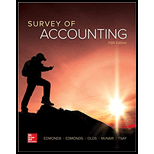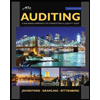
Fraud triangle
Sam Sharp is an accountant with a shady past. Suffice it to say that he owes some very unsavory characters a lot of money. Despite his past, Sam works hard at keeping up a strong professional image. He is a manager at Flowers and Associates, a fast-growing CPA firm. Sam is highly regarded around the office because he is a strong producer of client revenue. Indeed, on several occasions he exceeded his authority in establishing prices with clients. This is typically a partner’s job but who could criticize Sam, who is most certainly bringing in the business. Indeed, Sam is so good that he is able to pull off the following scheme. He bills clients at inflated rates and then reports the ordinary rate to his accounting firm. Say, for example, the normal charge for a job is $2,500. Sam will smooth talk the client, then charge him $3,000. He reports the normal charge of $2,500 to his firm and keeps the extra $500 for himself. He knows it isn’t exactly right. Even so, his firm gets its regular charges and the client willingly pays for the services rendered. He thinks to himself, as he pockets his ill-gotten gains, who is getting hurt anyway?
Required The text discusses three common features (conditions) that motivate ethical misconduct. Identify and explain each of the three features as they appear in the given scenario.
Want to see the full answer?
Check out a sample textbook solution
Chapter 4 Solutions
SURVEY OF ACCOUNTING(LL)>CUSTOM PKG.<
- 1. Which financial statement shows a company's financial position at a specific point in time?A. Income StatementB. Statement of Cash FlowsC. Balance SheetD. Retained Earnings Statement1. Which financial statement shows a company's financial position at a specific point in time?A. Income StatementB. Statement of Cash FlowsC. Balance SheetD. Retained Earnings Statementneed helparrow_forwardWhich of the following is not included in the calculation of net income?A. RevenuesB. DividendsC. ExpensesD. Gains and lossesarrow_forwardDepreciation is recorded in the books to:A. Allocate the cost of an asset over its useful lifeB. Estimate the resale value of assetsC. Track market valueD. Match expenses with liabilities no aiarrow_forward
- 1. Which financial statement shows a company's financial position at a specific point in time?A. Income StatementB. Statement of Cash FlowsC. Balance SheetD. Retained Earnings Statementno aiarrow_forwardI am looking for help with this general accounting question using proper accounting standards.arrow_forward1. Which financial statement shows a company’s financial position at a specific point in time?A. Income StatementB. Statement of Cash FlowsC. Balance SheetD. Retained Earnings Statementarrow_forward
- I need help finding the accurate solution to this financial accounting problem with valid methods.arrow_forward4. Depreciation is recorded to:A. Match cash flowsB. Reflect a decline in market valueC. Allocate cost of an asset over its useful lifeD. Increase net incomeno AIarrow_forward4. Depreciation is recorded to:A. Match cash flowsB. Reflect a decline in market valueC. Allocate cost of an asset over its useful lifeD. Increase net incomeneed helparrow_forward
- 4. Depreciation is recorded to:A. Match cash flowsB. Reflect a decline in market valueC. Allocate cost of an asset over its useful lifeD. Increase net incomearrow_forwardWhich of the following is a contra asset account?A. Accounts PayableB. Accumulated DepreciationC. InventoryD. Notes Receivable no Aiarrow_forwardPlease provide the correct answer to this financial accounting problem using accurate calculations.arrow_forward
 Auditing: A Risk Based-Approach (MindTap Course L...AccountingISBN:9781337619455Author:Karla M Johnstone, Audrey A. Gramling, Larry E. RittenbergPublisher:Cengage LearningPrinciples of Accounting Volume 2AccountingISBN:9781947172609Author:OpenStaxPublisher:OpenStax College
Auditing: A Risk Based-Approach (MindTap Course L...AccountingISBN:9781337619455Author:Karla M Johnstone, Audrey A. Gramling, Larry E. RittenbergPublisher:Cengage LearningPrinciples of Accounting Volume 2AccountingISBN:9781947172609Author:OpenStaxPublisher:OpenStax College Auditing: A Risk Based-Approach to Conducting a Q...AccountingISBN:9781305080577Author:Karla M Johnstone, Audrey A. Gramling, Larry E. RittenbergPublisher:South-Western College Pub
Auditing: A Risk Based-Approach to Conducting a Q...AccountingISBN:9781305080577Author:Karla M Johnstone, Audrey A. Gramling, Larry E. RittenbergPublisher:South-Western College Pub



